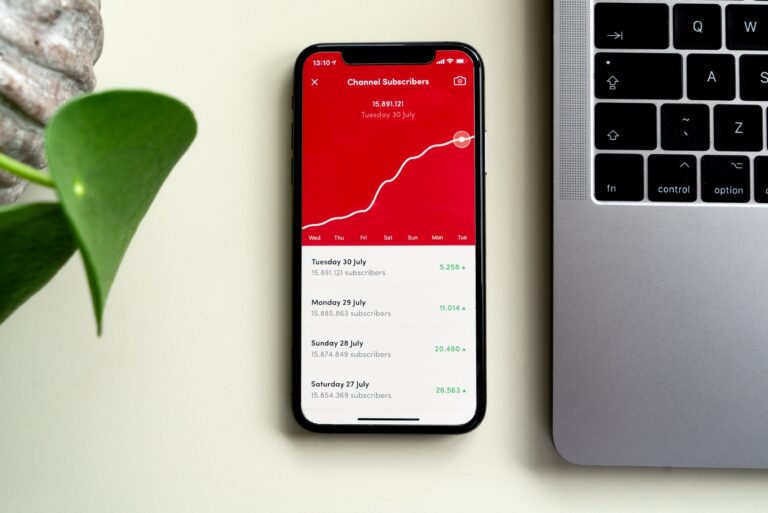The eCommerce sector has never been so competitive. According to data from Oberlo, the online retail industry is expected to grow 10.3% during 2023. It may seem like a promising statistic, but it’s far lower than E-Commerce’s 2021 growth rate, which rose up to 17.1%, making it the best year in the industry’s history.
With increased competitiveness, online retailers share two big goals:
- To increase and maintain their organic discoverability in a sector that’s always been at the cutting edge of SEO
- To deliver a smooth, fast, and highly-personalized shopping experience
In this post, we’ll explore how technical SEO can help you reach those goals.
We’ll share:
- Why SEO is crucial for E-Commerce
- Why technical SEO for E-Commerce is different from other industries
- Our top E-Commerce SEO best practices
- Our technical SEO audit checklist for E-Commerce
Ready? Let’s dive in!
Why Is SEO Important for E-Commerce?
You probably already know that SEO is key to your e-Commerce platform’s success. In short, without a good SEO strategy, your discoverability will be limited, or you’ll rely on inefficient PPC campaigns for consistent traffic.
Further, a good SEO strategy can improve the overall quality of your platform’s UX. So, SEO could also help you to increase your conversion rate.
When you think about E-Commerce SEO, the first thing to come to your mind may be how to use keywords in your product descriptions. But SEO isn’t just about keyword optimization.
In fact, if you run a large platform, there’s another key concern that should be at the same level as keyword optimization: Technical SEO.
Technical SEO is a set of practices that can help you to improve your website’s crawlability and indexability.
Overall, a good technical SEO strategy:
- Makes it easier for search engine crawlers to understand the structure of your website
- Helps search engines to prioritize your most valuable content
- Makes your UX more predictable and performant
But, is doing technical SEO for e-commerce different from optimizing any other type of website? Yes, it is. In the next section, we’ll explore why.
How Is Technical SEO for E-Commerce Different From Regular Technical SEO?
Technical SEO for e-commerce is different from regular technical SEO.
Essentially, this is due to:
- How users interact with the content
- How content is filtered and delivered
- The volume and density of the content at hand
- How discoverability works for E-Commerce
Let’s explore a simple example.
Imagine you’re shopping online for a mid-size leather jacket for men, in the “biker” style. You may go to an online store, look for “leather jacket”, make sure you’re in the “Mens” category, and apply style and size filters. The resulting URL may look something like this:
https://[www.example.com]/shopping/men/jackets-2/items.aspx?page=1&view=90&sort=3&q=leather%20jacket&category=136400%7C136405&size=2120
Everything you can find after the question mark is a series of parameters. These parameters include:
- The page you’re on
- Your search query
- A category code
- A style code
- A size code
Technically, if you look for any other search query and apply any other combination of filters, the online store will generate a similar URL. The results are thousands of unique URLs with endless different combinations of parameters.
But, if you enter that URL (which was taken from a real online store), you may find a canonical tag.
This canonical tag makes it so search engine crawlers will prioritize the non-parametrized version of the URL when ranking this website. In short, the canonical tag lets search engines know what’s the original and best version of the page, preventing Google from having thousands of parametrized URLs competing against each other.
When users interact with your online store, they’re creating URLs. So having no technical SEO strategy is a disaster waiting to happen. We’re talking about incurring duplicate content.
Basically, you’d be telling Google there are tons of pages that are virtually the same, forcing it to figure out which to show in SERPs. The most likely result? Not ranking any of the pages because of the confusing signals Google is getting.
E-Commerce SEO Best Practices to Boost Your Rankings & Improve Your Site’s Health
Now you know why technical SEO matters for E-Commerce websites, and why it’s particularly challenging. So, let’s take a look at 9 best practices that could help you boost your rankings and improve your site’s health.
We recommend:
- Optimizing your loading speed
- Reviewing your navigation and internal linking
- Implementing Schema markup
- Keeping an eye on your sitemaps
- Setting canonical URLs
- Managing your crawl budget
- Keeping your URLs as readable as possible
- Localizing carefully
- Setting clear stock management policies
Let’s dive deeper, shall we?
Optimize Your Loading Speed
Google loves fast websites, and users do too. And this is especially the case for mobile users, which make up 70% of E-Commerce traffic worldwide.
According to data by ThinkWithGoogle, every second your loading speed increases, raising the possibility of a user bouncing by 123%.
(e.g. Graph of Sessions – Page Speed and Bounce Rate)
What’s more, Google’s 2018 study revealed that over half of web traffic comes from mobile devices. However, mobile conversion rates are lower than desktop, indicating that speed is crucial for revenue. In this study, Google analyzed 11 million mobile ads’ landing pages across the globe and found that most mobile sites remain slow and cluttered with elements.
And, for 70% of the mobile landing pages studied, it took:
- Over five seconds for the visual content above the fold to display
- Over seven seconds to load all visual content.
Some other interesting findings include:
- Ads account for 50% of server requests on mobile sites.
- 46% of users dislike waiting for pages to load when browsing on mobile.
- Sites loading in 5 seconds instead of 19 have 60% more pageviews and 35% lower bounce rates.
- 53% of visitors may leave a site if loading time exceeds 3 seconds.
In short, Slow Pages = Less Conversion Rate.
This pattern is clear in conversion rates too. Optimal results occur with sub-one-second page speeds, but rates decline by half across all devices as speed goes from one to two seconds.
But, how can you get started? We suggest:
- Minimizing your CSS & Javascript
- Adopting next-gen image formats
- Evaluating the possibility of adopting the AMP framework
Make Navigation Easy
Can your users navigate through your website in an intuitive way?
To make it easier for users and search engine crawlers to understand your website’s structure, we recommend:
- Keeping an orderly and prioritized menu
- Implementing HTML sitemaps
- Naturally including internal links to relevant products, categories, and pieces of content, throughout your website
Additionally, it’s worth mentioning that well-structured navigation will incentivize your users to spend more time on your platform. Why? Because it’ll help them discover new products, categories, and promotions.
Implement Schema Markup
If you want to make it easier for search engines to understand your page’s content, utilize Schema markup.
Thanks to schema markup, search engines can provide “rich results” in the SERPs. Rich results are interactive and get preferential placement in the SERPs, meaning they have a higher click-through rate.
The Google SERPs support several types of Schema markup that may be useful for E-Commerce websites. But in this section, we’ll focus on 5:
- LocalBussiness
- Product
- Review
- HowTo
- BreadcrumbList
Let’s take a quick look at each one.
LocalBusiness
LocalBusiness structured data may be extremely useful if you run a physical store. Similarly to a Google My Business listing, this result provides key business information, including location and opening hours.
Product
You can add Product structured data to display:
- Popular products
- A “shopping knowledge panel” with key product information
- Annotated product pictures, on Google Images results
Reviews
You can use structured data to show key information from a review page.
HowTo
If you’re using tutorials or recipes to promote your products, you can give them a special place in the SERPs through HowTo structured data.
However, beware: By offering your users the content’s key information directly from the search result pages, you may prevent them from visiting your website.
BreadcrumbList
You can add structured Breadcrumb data to optimize the breadcrumb trails on your SERP results. That way, it’ll be easier for users to understand your website’s structure.
Keep an Eye On Your Sitemaps
HTML sitemaps are great for users and crawlers alike. But, especially as your website grows, you’ll need an XML sitemap. This type of sitemap will help you ensure all your canonical URLs are indexed by search engines.
Set Canonical URLs
Utilize canonical URLs to:
- Prevent parameterized URLs from competing with your original content
- Prevent content duplication issues
- Help Google prioritize which versions of your URLs to rank
Manage Your Crawl Budget
The term “Crawl budget” refers to the number of pages that a search engine crawler is allowed to visit on your website during a given period. It’s mostly determined by:
- Your website’s size
- How frequently is updated your website
- How fast your server is
A crawl budget helps ensure that search engine crawlers prioritize the most important pages on a website.
As you grow, you won’t want crawlers to spend resources on pages that don’t help you rank and get sales. Thus, you should give search engine bots clear directives so they don’t waste time on low-value pages.
You can manage your crawl budget by:
- Having a reasonable and well-maintained XML sitemap.
- Creating a robots.txt file to inform search engine crawlers about what areas of your website aren’t worth crawling.
- Preventing content duplication
Keep your URLs readable
Create custom, descriptive URLs for products and category pages. Keeping your URLs cleanly readable will:
- Improve your crawlability
- Help users stay in control of their navigation experience
Localize carefully
Are you considering localizing your website, so you can expand to new markets? That’s great! But don’t forget to:
- Keep different versions of your website properly separated
- Use hreflang tags across your website, to point out different versions of the same content
Set clear policies for out-of-stock and discontinued items
What should happen when a product is discontinued or goes out of stock?
Popular options include:
- Leaving the page as it is, showing that the product is currently out of stock and recommending alternatives, or adding a “notify me” and email input – this may be the best option if the product’s temporarily out of stock.
- Setting a 301 redirect to a relevant alternative – however, this could confuse and frustrate your customer.
- Setting a 410 response and leading the user to a fallback page – is particularly useful when the product has been discontinued.
What’s important is that you have a well-established protocol for managing out-of-stock and discontinued items.
E-Commerce SEO Audit Checklist
We’ve already covered some key E-Commerce SEO best practices. By implementing them, you’ll guarantee a site health baseline. But, how can you know what’s your current SEO standing?
In this section, we’ll share a quick 20-point E-Commerce SEO audit checklist. To come up with an accurate and comprehensive SEO optimization plan, we recommend you:
- Ensure that each page has a descriptive title tag that accurately reflects its content
- Ensure that each page has a unique meta description with relevant keywords*
- Check for broken links and redirects
- Check for orphan pages
- Check if all your URLs have canonical links
- Ensure that all images include descriptive alt-text
- Verify that the website is responsive and works well on all devices
- Conduct a Google Lighthouse audit to make sure your site is performant and no heavy resources are slowing it down
- Check for proper use of structured data
- Check that the website is free of duplicate content – Is the same product or category available through two different URLs?
- Check your URL structure – Is it consistent and easy to understand?
- Look for any crawl errors on Google Search Console
- Check that the website has an XML sitemap and ensure that it’s up-to-date
- Check for any keyword cannibalization issues – Are two or more URLs targeting the same keyword?
- Take a look at your robots.txt – Is crawling allowed in the right directories?
- Verify that the website is secure and utilizes HTTPS throughout the customer journey
- Check for misplaced noindex and nofollow meta tags
- Check whether your pages’ structures have an easy-to-understand hierarchy
- Are your error pages returning the right 4XX status code?
- Does your site have redirect chains? Redirect chains are redirects that point to other redirects
*Pro-tip: You can make sure your meta titles and meta descriptions are optimized at scale, by setting up reusable templates, which you fill with dynamic product data. Plus, you can use AI tools to write and optimize these tags at scale.
E-Commerce Technical SEO Should Be an Ongoing Effort
In today’s post, we shared everything you need to know to make sure your online store is compliant with technical SEO best practices.
Our E-Commerce audit checklist can help you get a general sense of your site’s current status. But even after you’ve gone through it and solved any technical SEO issues you’ve found, your optimization efforts shouldn’t be over.
Technical SEO is an ongoing process. As your website grows, new products are uploaded, and new features are rolled out, you’ll have to keep an eye on your technical SEO. A misplaced “noindex” tag, a redundant piece of copy, or a poorly structured page could hurt your rankings. And, on large websites, these mistakes easily go under the radar and quickly stack up.
But don’t worry, we have you covered.
Save Time and Protect Your Rankings with SEORadar
SEORadar is a technical SEO monitoring tool that keeps an eye on your website’s code so you don’t have to. SEORadar constantly analyzes 100+ HTML elements across your platform, and notifies you of any changes that could hurt your rankings.
Teams at Yelp, Booking.com, Levi’s, and other industry leaders trust SEORadar to stay on top. Join them today, book a demo or start a free trial.












